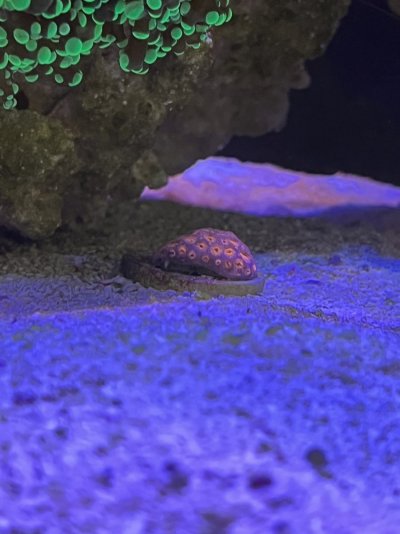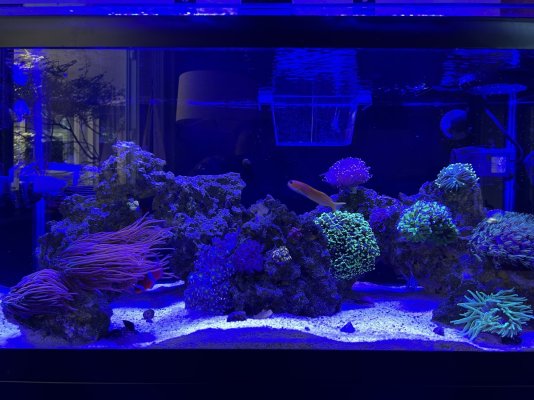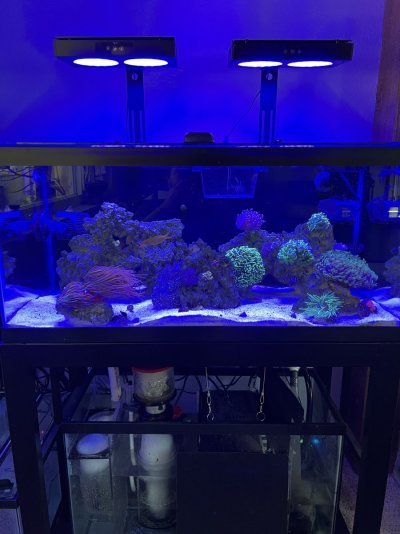I posted this in the general forum and have received no replies so I’m trying this group (Sorry, if I’m doing this incorrectly.):
This is my first post on R2R. I’m new to reefing. I have a 40b with LPS and softies—almost 6 mos old. Everything looks amazing! I’ve never really had trouble with any new corals. I wanted to try goniopora, and I found a tiny but gorgeous neon pink frag at my LFS. After paying WAY too much for a frag at my experience level, I took it home and it was doing great for a few days, and then it started retracting and a few days later it was completely closed. It’s been closed for about four days now. I had started it off on the sand bed under moderate light and flow and have tried moving it to lower light and flow areas with no response. Any advice would be most welcome.
My parameters are:
Salinity:34.7
Alk: 8.4
NO3: 13.0 (dosing NeoNitro shooting for 10.0)
PO3: 0.18 (little higher than normal)
Ca: 490
Mg: 1600
tank details (I went for cheap so I can stay married): 40b, 29g sump, nicrew 100w lights x 2, sicce voayger 2 wavemakers with wave surfer controller, reef octopus skimmer, chaeto in fuge with 100w cheap grow light, RODI water with ATO. I dose 2 part as needed. 10% water changed weekly (yesterday most recent), UV sterilizer (controlling an ongoing dino issue), and a bag of carbon between the fuge and return.
Pics below:



This is my first post on R2R. I’m new to reefing. I have a 40b with LPS and softies—almost 6 mos old. Everything looks amazing! I’ve never really had trouble with any new corals. I wanted to try goniopora, and I found a tiny but gorgeous neon pink frag at my LFS. After paying WAY too much for a frag at my experience level, I took it home and it was doing great for a few days, and then it started retracting and a few days later it was completely closed. It’s been closed for about four days now. I had started it off on the sand bed under moderate light and flow and have tried moving it to lower light and flow areas with no response. Any advice would be most welcome.
My parameters are:
Salinity:34.7
Alk: 8.4
NO3: 13.0 (dosing NeoNitro shooting for 10.0)
PO3: 0.18 (little higher than normal)
Ca: 490
Mg: 1600
tank details (I went for cheap so I can stay married): 40b, 29g sump, nicrew 100w lights x 2, sicce voayger 2 wavemakers with wave surfer controller, reef octopus skimmer, chaeto in fuge with 100w cheap grow light, RODI water with ATO. I dose 2 part as needed. 10% water changed weekly (yesterday most recent), UV sterilizer (controlling an ongoing dino issue), and a bag of carbon between the fuge and return.
Pics below:






















